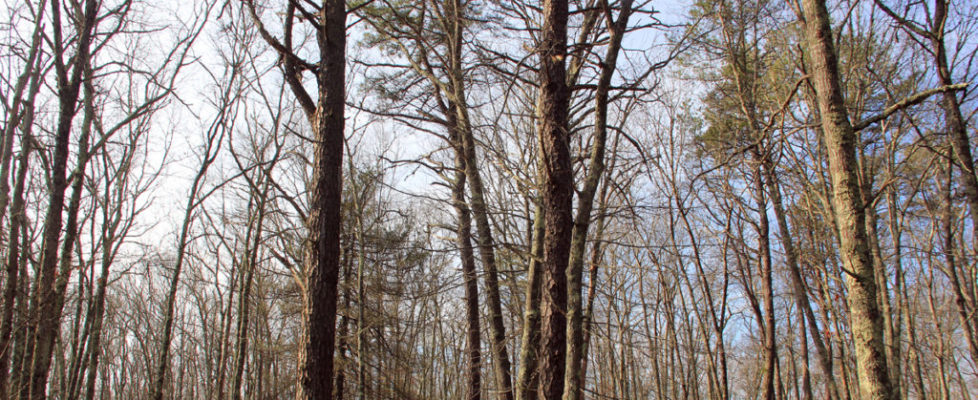George and Sue Tremblay: Hazards of Tree Mortality from Gypsy Moth Invasion
The following letter was published in local newspapers and is shared with us here by the authors George and Sue Tremblay. Mr. Tremblay is a past member of the Charlestown Town Council. George and his wife Sue manage a large garden and tree farm, growing their own food and fuel.
Walking the trails of our forested landscape, we see the skeletal remains of a once robust tree canopy, with dead and decaying remnants carpeting the forest floor. We are witnessing the extensive damage to our forest by successive invasions of gypsy moths in the summers of 2017 and 2018.
Gypsy moth caterpillars eat the leaves, and repeated defoliation kills the trees. Trees generally survive the first attack through a second growth of leaves later in the same summer, but repeated defoliation depletes the roots of essential nutrients supplied by the leaves, and the trees become too stressed to resist disease and thrive.
Weakened or broken branches are easily dislodged from the canopy, and pose a threat to those walking below. Hikers should be cautious when walking through weakened forest.
Substantial accumulation of the resultant debris on the forest floor increases the hazard for forest fires, especially considering the very flammable clumps of fungus (aka “old man’s beard”) attached to the bark of many of these trees. We use these clumps in place of paper as a fire starter in our wood stove. They are a fire hazard.
There is a soil fungus (Entomophaga maimaiga) that, under proper conditions (a wet spring), propagates to kill the gypsy moth caterpillars, thereby interrupting the cycle leading to a new crop of gypsy moths. Last spring, we observed a dense population of dead sickle-shaped caterpillars on the bark of trees. It was reported that this was the result of infection of the caterpillars, presumably by Entomophaga.
George and Sue Tremblay

March 25, 2019 @ 8:35 am
Other than spraying to kill the caterpillars, which can have many unintended consequences, there is little we can do to stop the predation on a scale that protects forests. We can, of course, hand-spray a prized plant or two, but even that requires repeated applications during a vigorous invasion. I tried protecting a small plot of Christmas trees (white spruce) in the mid 1980s, and the infestation was so persistent that I finally gave up spraying.
Fallen cones will germinate on the forest floor to produce a new crop of trees, but that takes years.
Biological control through introduction of predator organisms is an attractive option, but we should remember that improving on nature is how gypsy moths were introduced into our environment in the first place. They were introduced over 100 years ago as a promising new source of silk.
Killed trees are a good source of firewood. We have culled some 20 cords of firewood from moth-killed trees on our woodlot over the last two years. Roots from the stumps of live felled trees will sprout new growth, but we have seen no evidence of new growth from the stumps of our moth-killed trees. Defoliation starved the roots to death.
I suspect the forest will change. Where we once saw vigorous stands of oak, we may soon see a more dense understory of blueberry bushes, interspersed with volunteer white pine.
March 24, 2019 @ 7:33 pm
Thank you George and Sue. What can people do to mitigate the damage in the future? Can the understory replace the dead trees or is that strata of the forest also under attack? Can the wood from the dead trees be sold by the private property owners or public owners to benefit people who are having trouble heating their houses in the winter?